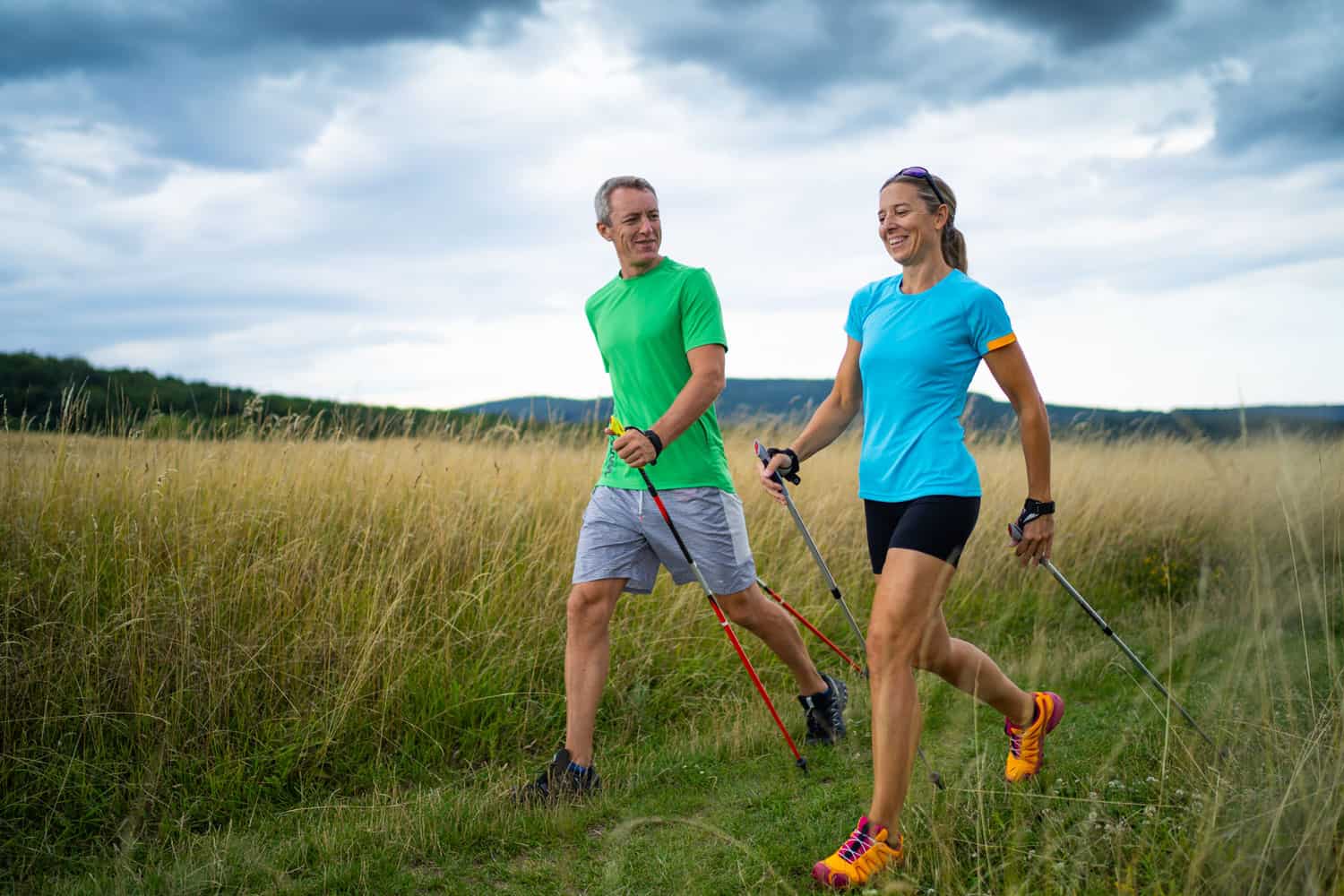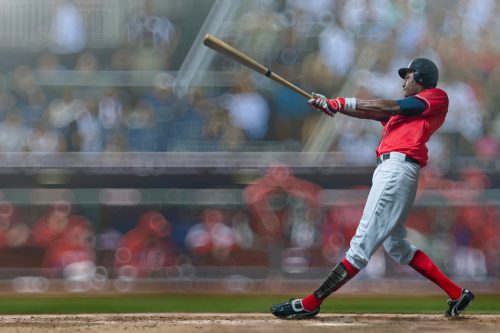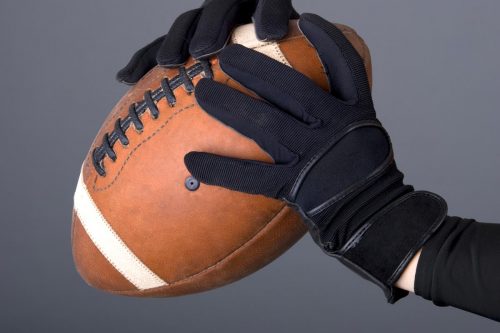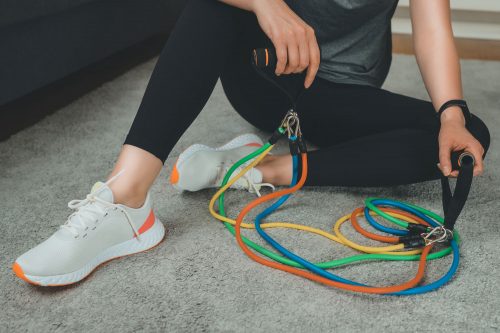Going for a brisk walk can be a great way to get healthy exercise without putting too much stress on your body. It has been shown to improve heart health, mood, circulation, endurance, and overall healthy habits. But if you want thicker legs (or want to avoid them), you might be wondering how walking will affect them. We've researched how walking affects your leg muscles to find the answer for you.
Walking will not make your legs bigger or thicker. It might decrease the fat on your legs and increase lean muscle -- also known as "toning" them -- but it will not increase the muscle's bulk. Walking is still a healthy activity and increases cardiovascular health. But if you want bigger legs, use strength and resistance training instead.
The body is a complex organism that is often difficult to understand. If you're confused by this information, just keep reading for more information on what actually makes legs bigger. We'll discuss the health benefits of walking, and tips on how to maximize your walking routine.

Walking Keeps Muscles Lean and Heart Healthy
Walking is classified as an aerobic, cardiovascular exercise. This means that the muscle primarily targeted is the heart. Aerobic exercise is mainly about improving endurance, which is exactly what walking does for your legs. If you walk consistently, you will find yourself able to walk farther and faster each time.
Aerobic exercise works your slow-twitch muscles. This makes it different from anaerobic exercise, which focuses on quick bursts of movement and quick-twitch muscles. This is why a marathon runner's body looks much different from a football player's body. An increase in slow-twitch muscles equals an increase in long, lean muscles. An increase in quick-twitch muscles through strength training equals bulkier muscles.
How to Build Bigger Leg Muscles
This means that if you want your legs to get bigger and more muscular, you need to add strength and resistance training to your exercise routine. Bulk is built by breaking down the muscles by pushing them through resistance. Then, they repair themselves using the fuel you put in your body. When they repair themselves, they grow back bigger and stronger than before.
The most popular form of strength training is weight lifting. Exercises such as weighted squats, Russian deadlifts, lunges, and jumping will work on your legs' quick-twitch muscles.
You might also have heard of resistance bands. These strips of rubber, pictured below, are designed to make movements more difficult by putting up resistance. They are another common and affordable way to increase the strength in your legs.
Click here to view these resistance bands on Amazon.
Want some ideas for exercises to do with resistance bands? Check out this article about how to exercise your glutes with exercise bands.
If you have very little muscle on your legs (due to an illness, lack of fitness, or some other extreme factor), walking will probably increase the size of your legs simply because it requires some resistance. However, the ceiling on how big your legs will get from walking remains low. Eventually, the growth in your legs will plateau unless you use strength training.
Get the most out of your walking workouts
If you want to use walking to exercise, there are ways you can do it more efficiently. Even though walking might seem simple, there are actually several ways to modify your workout. Nowadays, there are helpful tools to help you figure out how effective your workouts are.
We recommend using a fitness tracker to show you how far you've walked, how many steps you've taken, and your current heart rate. FitBit makes the one pictured below. It's durable, affordable, and does everything you'd want it to do for effective walking workouts.
Click here to view this fitness tracker on Amazon.
Is It Better To Walk Fast Or On An Incline?
Choosing between walking fast or on an incline depends on your personal goals. Walking on an incline is more likely to increase your leg strength than walking fast will. It also works with different muscles (calves, glutes, and outer quadriceps), whereas walking faster works the same muscles as walking at a normal speed.
As we mentioned above, if you want to increase your leg strength (and thus your muscle definition), you need to introduce resistance to your workout. Walking on an incline will do this naturally. Instead of simply propelling your body forward, you have to propel your body forward and at an upward angle.
Additionally, walking on an incline will increase your heart rate, a sure sign that you're working harder. In fact, relatively fit people will not be able to increase their heart rate enough simply by walking, no matter how fast they go. These people should consider walking on an incline or jogging.
Walking faster will increase your heart rate but does not necessarily increase resistance. A faster walk will increase cardiovascular fitness and muscle endurance but will not increase muscle mass. If your goal is to have a healthier heart and to be able to walk longer distances, walking faster is better than on an incline.
Treadmills often come with a setting that lets you choose the degree of incline. For details on treadmills and a discussion of the top brands, read this article.
What Is A Good Distance To Walk Everyday?

The Center for Disease Control and Prevention recommends taking approximately 10,000 steps every day. This works out to about five miles for the average-sized person and can include steps taken during the course of a normal day. Ten thousand steps were chosen because it corresponds to the average person's recommended caloric intake and is achievable for most people.
If you take at least 10,000 steps each day, you will reap the benefits of walking: improved heart health, mood, circulation, flexibility, and endurance. This doesn't mean you should only take 10,000 steps. If you can walk more than five miles, go for it!
Is It Better To Walk Faster Or Longer?
The answer to this question depends on you personally. Both forms of walking have positive factors. As has been mentioned, walking fast increases your heart rate. Walking at a fast pace also allows you to cover more ground in a shorter amount of time. It's a more efficient way to burn calories. This is an important factor for those who have busy schedules.
However, a study performed by the University of Colorado determined that walking at a speed of two miles per hour burns more calories per mile than a normal walking speed of three to four MPH. While walking a mile at that low speed would take a half-hour, it would theoretically be a more productive mile. This is because walking slowly removes the momentum factor. Basically, each step starts from a stop. Instead of your previous step carrying you forward, you're responsible for launching each step.
Also, keep in mind that walking slower is gentler on bones and joints. If you have chronic pain and have plenty of time to walk long distances, it might make more sense to walk for a longer time at a slower pace.
On the other hand, if you have a tight schedule and want to maximize caloric burn, increase your walking pace to as quickly as you can handle. The most important aspect is to choose exercise formats that you'll do consistently.
Does Walking Tone Your Legs More Than Running?

No, walking does not tone your legs more than running. Running or jogging burns more calories than walking does. Furthermore, propelling forward in a running motion puts more resistance on your leg muscles than walking does. Repeated resistance will not necessarily lead to bigger muscles but will firm the existing muscles.
Remember that part of the toning process is burning calories. Running accomplishes this better than walking does because of the increased resistance and heart rate. Combined with a healthy, protein-rich diet, running will tone your legs relatively quickly.
However, keep in mind that running isn't for everyone. Running -- or jogging -- puts more stress on your bones and joints than walking does. If you have joint pain or have experienced stress fractures in your lower body, it might be best to stick to walking instead of running.
In Closing
Walking is a healthy exercise for the vast majority of people. However, it won't increase muscular bulk in your legs. If that's your goal, use weight and resistance training to force your muscles to repair themselves.
If your goal is to increase your cardiovascular health and muscular endurance, go on regular walks. Vary your walking exercise by increasing incline and speed, and consider running if your joints can handle it.
Hopefully, this article has helped you understand the benefits of walking and determine which type of exercise is right for you. Good luck!








